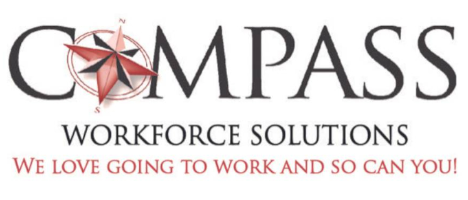[av_post_metadata post_selected=” seperator=’/’ before_meta_content=” after_meta_content=” margin=” margin_sync=’true’ padding=” padding_sync=’true’ av-desktop-margin=” av-desktop-margin_sync=’true’ av-desktop-padding=” av-desktop-padding_sync=’true’ av-medium-margin=” av-medium-margin_sync=’true’ av-medium-padding=” av-medium-padding_sync=’true’ av-small-margin=” av-small-margin_sync=’true’ av-small-padding=” av-small-padding_sync=’true’ av-mini-margin=” av-mini-margin_sync=’true’ av-mini-padding=” av-mini-padding_sync=’true’ align=’left’ custom_title=” size=” av-desktop-font-size=” av-medium-font-size=” av-small-font-size=” av-mini-font-size=” alb_description=” id=” custom_class=” template_class=” av_uid=’av-lhv4uw1u’ sc_version=’1.0′ admin_preview_bg=”]
[av_metadata_item metadata=’published’ before_meta=” after_meta=” link_meta=’default’ link_target=” av_uid=’av-lhv4uuoy’ sc_version=’1.0′]
[av_metadata_item metadata=’categories’ before_meta=’in’ after_meta=” link_meta=’default’ link_target=” av_uid=” sc_version=’1.0′]
[/av_post_metadata]
 It has become a feeding frenzy. Everyone who sells products are reacting to the state mandated retirement plans. Most recently, BigBox Payroll (whose name sounds like a breakfast cereal) is hounding a couple of our clients and saying they must have a retirement plan by June 1, 2022.
It has become a feeding frenzy. Everyone who sells products are reacting to the state mandated retirement plans. Most recently, BigBox Payroll (whose name sounds like a breakfast cereal) is hounding a couple of our clients and saying they must have a retirement plan by June 1, 2022.
WRONG!!!!!
The New York plan is not even set up yet. So, here’s the history:
If your New York based company is not currently offering a retirement plan for your employees, you may be required to offer one immediately. (Read: employers will have up to 9 months after the implementation of the state-run plan to do so).
On October 21, 2021, New York State Governor Kathy Hochul signed legislation that requires many private sector employers to enroll their employees in a state-run retirement savings program. The NYS legislature approved this program to help many New Yorkers have an easier way to save for retirement. Their surveys determined that employees are 15 times more likely to save if they can do so through their workplace, and 20 times more likely to save if they are automatically enrolled in a program. California, Oregon and Illinois already have established these state-run programs.
If employers meet the requirements described below, participation in the New York State Secure Choice Savings Plan (Secure Choice) will be mandatory.
The newly signed law applies to all New York State employers (both for profit and not-for-profit) that:
a) employed at least 10 employees in the state at all times during the previous calendar year,
b) have been in business at least 2 years,
and
c) have not offered a qualified retirement plan (such as a 401(k) or Profit Sharing Plan) in the preceding 2 years.
The new law takes effect immediately, but grants employers additional time to implement. Participating employers will need to set up payroll deposit IRAs for their employees within 9 months from the date the Secure Choice board opens enrollment. Once enrolled, employers will be required to withhold 3% of a person’s pay via payroll deductions from all employees, unless the employee affirmatively opts out of the program, or opts to have a greater or lesser amount than 3% withheld.
If this new law applies to you as a business owner, now is the time to review your business and retirement savings objectives. Is this state mandated Secure Choice program the right fit for your company? Should you consider the additional benefits and savings opportunities that a 401(k), SIMPLE IRA or 403(b) plan could provide. Are you going to enjoy NYS climbing in your business even more than they already do?
Next Steps for New York Employers
Again, while the law became effective when Governor Hochul signed it on October 21, it is unclear when the program will actually open for enrollment. It is expected this will happen sometime in 2022. Therefore, employers are not required to take any immediate action.
Once the program opens for enrollment, employers will have 9 months to set up the payroll deposit system. They should be on the lookout for additional details regarding when the program opens for enrollment, as well as any regulations that are issued.
Requirements for Applicable Employers to enroll in NY Secure Choice became effective December 31, 2021 without a clear mechanism to do so. Further, it has also been anticipated that official action would be issued to repeal the New York City Retirement Security For All Act – a different law – because it addresses substantially the same population of employers as the NY Secure Choice program, but that has not yet occurred. Now, implementation of the NY Secure Choice appears to be moving forward.
On January 26, 2022, the Board held its first Meeting, adopted Bylaws and delegated its authority and responsibility for the development and implementation of the program to the Department of Taxation and Finance (the “Department”). The meeting minutes also reflect that the Department will release a request for proposals on the Board’s behalf. Additionally, the Department will procure a consultant to assist with program design, and the development of future procurements for the NY Secure Choice program administration and investment management. Notably, under the Bylaws, no member, employee or agent of the Board shall be liable for any loss or deficiency resulting from particular investments selected for the program, except for any liability that arises out of a breach of fiduciary duty. Further, they shall be entitled to defense and indemnification in accordance with section 17 of the Public Officers Law. It is not clear, however, what investments will be selected for the program, or how they will be monitored. What this probably means is some warm individual attorney-type will probably figure out a way to sue you for your choice of the state plan.
In light of these developments, Applicable Employers should:
- Track when the enrollment period begins. Payroll deposit arrangements to participate in the program will be required within 9 months of the official guidance opening the program.
- Ensure they supply informational materials and disclosures (once they have been developed by the Board or its designee), to their existing employees at least one month prior to their access to the program.
- Follow potential ERISA preemption legal challenges. A challenge to CalSavers – a similar law – fell short. It remains to be seen whether additional ERISA preemption challenges will ensue. For example, asserting that these state-run programs may have an indirect influence on an employer’s decision to implement an ERISA plan.
- Consider the pros and cons of various approaches, including sponsoring their own retirement plan. This may necessitate issuing requests for proposals for service providers and investment advisors, or perhaps considering whether a pooled employer plan approach is desirable.
Applicable Employers that take action now will be able to keep pace with the implementation timeline of the NY Secure Choice program and be well-positioned to follow through on a course that is best suited for their organization.
Remember, if your payroll company is telling you that “you have to act now,” they may be encouraging action for their benefit.








